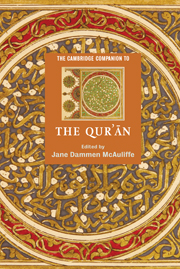Crossref Citations
This Book has been
cited by the following publications. This list is generated based on data provided by Crossref.
Ghabban, ‘Ali ibn Ibrahim
and
Hoyland, Robert
2008.
The inscription of Zuhayr, the oldest Islamic inscription (24 AH/AD 644–645), the rise of the Arabic script and the nature of the early Islamic state1.
Arabian Archaeology and Epigraphy,
Vol. 19,
Issue. 2,
p.
210.
Kuiper, Matthew J.
2012.
Joshua’s Jihad? A Reexamination of Religious Violence in the Christian and Islamic Traditions.
Transformation: An International Journal of Holistic Mission Studies,
Vol. 29,
Issue. 2,
p.
149.
Tabrizi, A. A.
and
Mahmud, R.
2013.
Issues of coherence analysis on English translations of Quran.
p.
1.
Kelsay, John
2013.
The International Encyclopedia of Ethics.
McDONOUGH, RICHARD
2013.
Religious fundamentalism: a conceptual critique.
Religious Studies,
Vol. 49,
Issue. 4,
p.
561.
Dobrez, Livio
2014.
The Culture of Endings.
Humanities,
Vol. 3,
Issue. 4,
p.
711.
Hakak, Saqib
Kamsin, Amirrudin
Tayan, Omar
Idna Idris, Mohd. Yamani
Gani, Abdullah
and
Zerdoumi, Saber
2017.
Preserving Content Integrity of Digital Holy Quran: Survey and Open Challenges.
IEEE Access,
Vol. 5,
Issue. ,
p.
7305.
Sahin, Abdullah
2018.
Critical Issues in Islamic Education Studies: Rethinking Islamic and Western Liberal Secular Values of Education.
Religions,
Vol. 9,
Issue. 11,
p.
335.
Shaw, Wendy M. K.
2019.
What is 'Islamic' Art?.
Tantawi, Imad K.
Abushariah, Mohammad A. M.
and
Hammo, Bassam H.
2021.
A deep learning approach for automatic speech recognition of The Holy Qur’ān recitations.
International Journal of Speech Technology,
Vol. 24,
Issue. 4,
p.
1017.
Al-Rikaby, Ali Badeen Mohammed
Altahmazi, Thulfiqar Hussein
and
Tan, Debbita Ai Lin
2021.
When Politicians Talk.
p.
35.
Darzi, Ghasem
Ahmadvand, Abbas
and
Nushi, Musa
2021.
Revealing gender discourses in the Qurʾān: An integrative, dynamic and complex approach.
HTS Teologiese Studies / Theological Studies,
Vol. 77,
Issue. 4,
Demichelis, Marco
2021.
Quranic Christology in Late Antiquity. ‘Isa ibn Maryam and His Divine Power (Energeia) in the Islamic Revelation.
Religions,
Vol. 12,
Issue. 11,
p.
979.
Dye, Guillaume
2021.
Concepts and Methods in the Study of the Qur’ān.
Religions,
Vol. 12,
Issue. 8,
p.
599.
Pollitt, Michael
2021.
Translating the Muslim for Christian Europe: Re-assessing the Interpretation ofaslamain the First Latin Translation of the Qur’an.
Islam and Christian–Muslim Relations,
Vol. 32,
Issue. 4,
p.
407.
Galadari, Abdulla
2021.
Inspiration and Revelation of the Qur’an and Its Relation to the Bible.
Religions,
Vol. 12,
Issue. 11,
p.
1023.
Ayyad, Essam
2022.
Re-Evaluating Early Memorization of the Qurʾān in Medieval Muslim Cultures.
Religions,
Vol. 13,
Issue. 2,
p.
179.
Akay Dag, Esra
2022.
Problematising the Islamic Theology of Religions: Debates on Muslims’ Views of Others.
Religions,
Vol. 13,
Issue. 3,
p.
223.
Heidary, Majid
2022.
Aesthetic Perspectives on Culture, Politics, and Landscape.
p.
71.
BOISLIVEAU, Anne-Sylvie
BOUDIER, Mathilde
and
VALLET, Eric
2023.
Le Coran en contexte(s) omeyyade(s) : introduction.
Archimède. Archéologie et histoire ancienne,
Vol. 10,
Issue. ,
p.
1.



